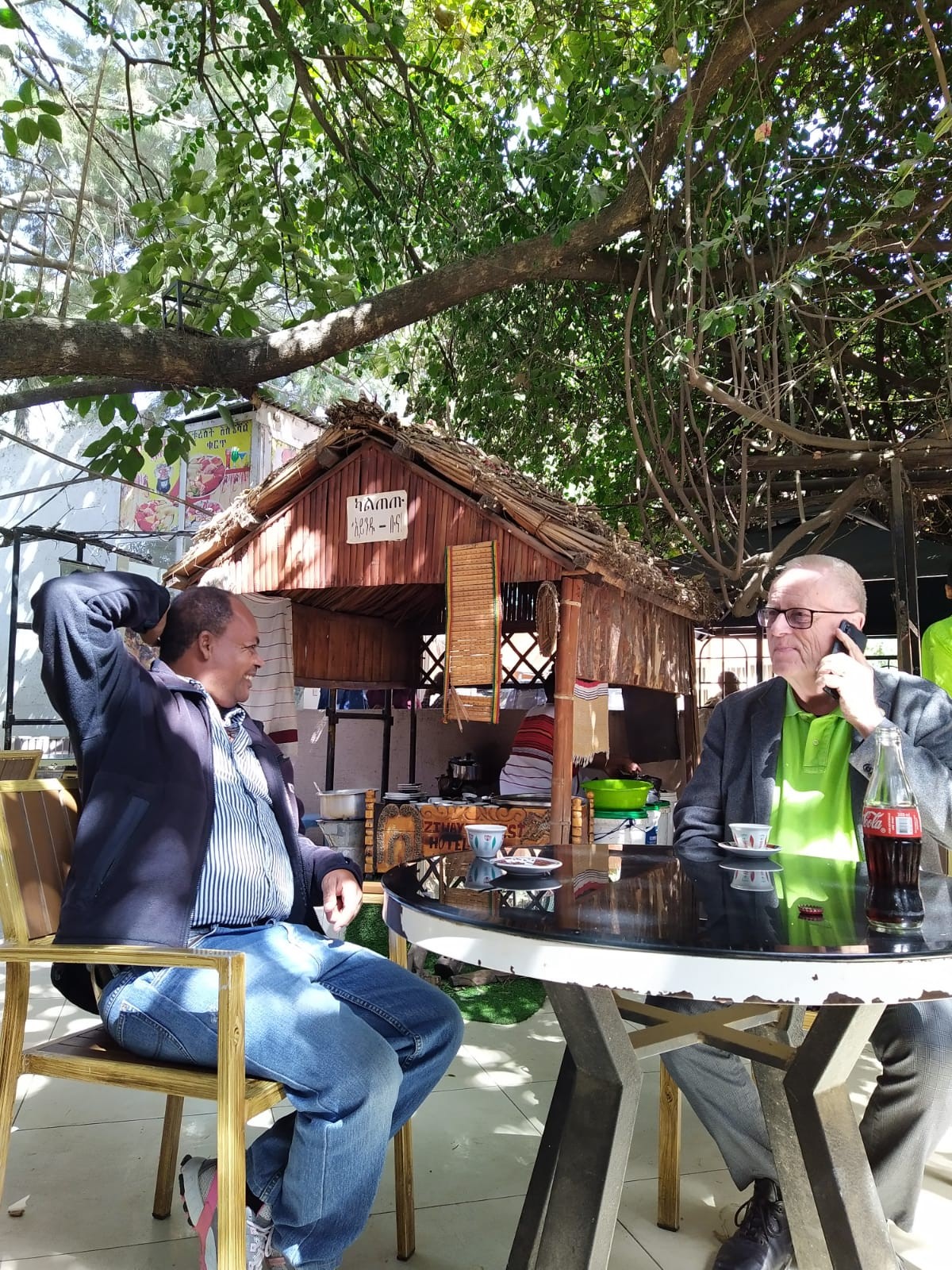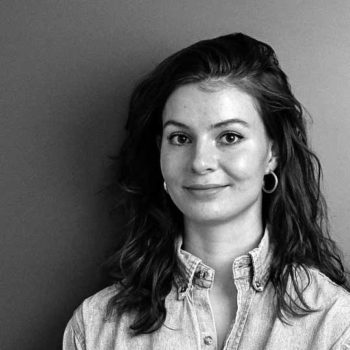
There is development cooperation, and then there is development cooperation in times of crisis. How do these differ in practice? Arto Suominen of the Finnish-Ethiopian Community-Led Accelerated WASH (COWASH) project has found out while working in conflict-stricken Ethiopia for the past year.
Arto Suominen’s name has been popping up in the research group’s news for some time now as he has been advising master’s theses related to the Ethiopian water sector. However, only a few have met him so far or know about his work. Arto is the head of the bilateral Finnish-Ethiopian development cooperation project, Community-Led Accelerated WASH (COWASH), which supports water, sanitation and hygiene (WASH) development in five states and 76 districts in Ethiopia. The project employs the Community Managed Project (CMP) approach, which in short builds on the communities themselves being the key players of planning, constructing and maintaining the WASH systems[i]. Since its start in 2011, COWASH has helped approximately five million rural Ethiopians so far in getting access to clean water and sanitation[ii]!
I stayed with Arto’s family for three weeks this winter due to both of us working on another WASH project situated in Ethiopia. That project is coordinated by a Finnish NGO, WaterFinns. Although things in Addis Ababa felt tranquil and easy-going, Ethiopia is facing different crises left, right and center. COVID-19 is a dire issue all over the world, but on top of that, Ethiopia is dealing with several domestic and foreign policy conflicts. First, the very famous and controversial Grand Ethiopian Renaissance Dam is planned to be filled up in July, although downstream countries Sudan and Egypt have voiced their concerns that it would pose a safety risk for them as well as restrict their water resources too much. This month, Sudan’s Irrigation Minister warned Ethiopia against filling the dam without an agreement[iii]. Ethiopia however argues that the dam is vital for its economic growth and shall help meet the energy needs of Ethiopia’s huge 110 million population[iv].
Second, the before peaceful “soft border” zone between Sudan and Ethiopia is becoming disputed, as both countries have recently gathered their troops along the border[v]. Third, Ethiopia faces serious armed conflict in one of its Northern states, Tigray. The Tigray Regional Government, led by the Tigray People’s Liberation Front (TPLF), and Ethiopian National Defense Forces have been combatting in the state since November 2020. On top of this, a strong Oromo ethnic armed opposition group and another armed Gumuz ethnic group are threatening ethnic Amharas in West-Ethiopia[vi] and in Benishangul-Gumuz state[vii], respectively. Similar conflicts between clans are also taking place in the East in Afar and Somali states[viii]. Lastly, Ethiopia has been hit very severely by the devastating desert locusts destroying thousands of hectares of vegetation and crops[ix].
Consequently, I caught up with Arto about what it is like working in country-wide development cooperation in such uncertain conditions:

Figure 1. Getu, one of the COWASH project’s drivers (left), and Arto (right) having a coffee break in Zewai.
- COWASH has a responsibility to help people in getting access to water also during these volatile times. Is the dam issue or the disputes at the Sudanese border affecting your work? What about the ethnic tensions in East and West Ethiopia?
The dam issue is not affecting my work at all, although it certainly is keeping the Minister of Water, Irrigation and Energy extremely busy. I know this because he’s working just down the hall from me in the ministry. Regarding the crisis at the Sudanese border, I have to follow the news about it very closely, as it may start to affect our project in the future. However, currently, it does not interfere with our work. Regarding the ethnic tensions, the project has been at a standstill for several months in West Wollega (Western part of Oromia state) and Metekel (Benishangul-Gumuz state) due to the local conflicts. It is too dangerous for us to access those areas. The Afar-Somali conflict is also affecting us as it is blocking the delivery of goods from Djibouti to Ethiopia.
- What about COVID-19, how is the pandemic changing your project?
When COVID-19 started, most foreigners left Ethiopia. Only a few stayed, myself included. The pandemic has changed the routines of our office: more meetings are held online, we wear masks and instead of going to restaurants for lunch, we bring our own food to work. Completely changing to remote working is not very realistic here, as the internet connection can be so poor at times. Most people in Addis also wear masks, as it is officially mandatory, but this changes when you move to other parts of the country. Currently, and for the next nine months, COWASH focuses on COVID-19 resilience building of communities in our 76 districts. Our project has had to adapt to COVID-19 by focusing on building resilience against the pandemic through awareness-raising, putting even more emphasis on hand-hygiene in health-posts, households and schools, on top of rehabilitating water supply systems. Before the Tigray conflict, we also had to quarantine for a few days when we travelled there. Once our COVID-19 tests were confirmed negative, we could start our work in the area.
- How does the situation in Tigray affect your day-to-day work?
Out of all these crises, the Tigray crisis clearly affects my work the most. We are working in seven woredas (districts) in Tigray state and there is no way we can go there to monitor progress or transport supplies. At one point, we were not able to reach our Tigray project team for weeks. We had no idea if they were safe. Now the project activities in the state have turned into emergency response. There are approximately 2.5 million people in need of emergency relief in Tigray. They mostly have drinking water and food, but many lack hygiene supplies, such as water to wash themselves with. Moreover, many of the folks in need are internally displaced people who require help in the (infrastructure-poor) places they are currently in. We are trying to get supplies to them through Ethiopian Emergency Coordination Center. Right now, I am making a proposal to take water to refugee camps with water tanker trucks. Additionally, we’re planning to deliver mobile water treatment devices to the area to help with treating surface water. I am also waiting for an emergency response package proposal from Tigray.
- Do you think people outside Ethiopia have an accurate picture of what is going on?
I would call what is going on as a media war. International news agencies seem to be against Ethiopia, which is reflected in the tone of the reports they write about the Tigray crisis. For example, I keep seeing headlines like ”Will Ethiopia allow emergency aid to Tigray?”, whereas, actually, no-one is preventing aid workers from helping. It is simply very unsafe to go to the area and therefore complicated to organize help, like in the case of our project. Yet, we hope the combatting parties soon come to some kind of agreement that would make getting emergency relief to the area easier.
Anni Juvakoski is a doctoral candidate at Aalto University’s Water and Environmental Engineering Research Group. Her doctoral research focuses on the spread and prevention of waterborne diseases, especially in low and middle-income countries.

Sources:
[i] Community Managed Projects – CMP CoWASH Ethiopia, website. (2020). Available at: [https://www.cmpethiopia.org]. Viewed on 13.2.2021.
[ii] Zoom interview of Arto Suominen on 11.2.2021. This text was alsochecked and edited by him before publishing.
[iii] Al Jazeera. (2021). Sudan minister warns Ethiopia against filling dam without deal. Available at: [https://www.cfr.org/blog/ethiopia-sudan-border-dispute-raises-stakes-security-horn]. Viewed on 13.2.2021.
[iv] The Geopolitics. (2021). The Controversial Geopolitics of Ethiopia’s Dam Building. Available at: [https://thegeopolitics.com/the-controversial-geopolitics-of-ethiopias-dam-building/]. Viewed on 13.2.2021.
[v] Council on Foreign Relations. (2021). Ethiopia-Sudan Border Dispute Raises Stakes for Security in the Horn. Available at: [https://www.cfr.org/blog/ethiopia-sudan-border-dispute-raises-stakes-security-horn]. Viewed on 13.2.2021.
[vi] The Guardian. (2020). At least 54 killed in Ethiopia massacre, says Amnesty. Available at: [https://www.theguardian.com/world/2020/nov/02/killed-ethiopia-massacre-amnesty-oromia-amhara]. Viewed on 15.2.2021.
[vii] New York Times. (2021). Dozens Die in Ethnic Massacre in Troubled Ethiopian Region Available at: [https://www.nytimes.com/2021/01/13/world/africa/ethiopia-ethnic-killings.html]. Viewed on 15.2.2021.
[viii] Addis Standard. (2020). Afar, Somali Regions Trade Serious Accusations after Renewed Violence Leaves Scores Dead. Available at: [https://addisstandard.com/news-afar-somali-regions-trade-serious-accusations-after-renewed-violence-leaves-scores-dead/]. Viewed on 15.2.2021.
[ix] UN News. (2021). East African countries better prepared, but desert locust threat ‘not over’. Available at: [https://news.un.org/en/story/2021/01/1082512]. Viewed on 15.2.2021.

